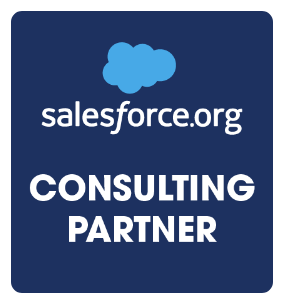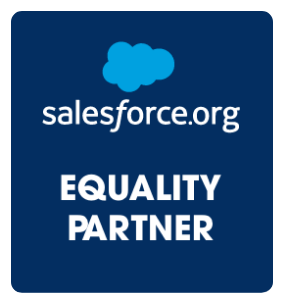
Strength in Numbers – Driving Successful Technology Implementations with a Consortium Approach
Let’s face it, times are turbulent right now in higher education. In an era of shrinking budgets, shifting student demographics (not to mention the “enrollment cliff”), and increasing pressure to innovate, higher education institutions face an uphill battle to remain competitive and financially sustainable.
For institutions within the same state system, one of the most effective strategies to navigate this evolving landscape is to band together and form a consortium, especially when undergoing massive technology implementations.
A higher education consortium serves as both a partnership and a strategic alliance—one that enables institutions to share administrative functions, pool resources, and collaborate on large-scale initiatives like enterprise system overhauls. By working together, these schools can streamline operations, optimize costs, and ensure a smoother transition when adopting modern technology platforms.
Benefits of Collaboration in Technology Implementations via Consortiums
Too often, institutions operate in silos, each managing its own legacy systems, IT infrastructure, and data governance processes. This approach can be inefficient, costly, and riddled with inconsistencies. A consortium allows schools to consolidate efforts in deploying new enterprise solutions—such as a new ERP, CRM, or SIS—leading to reduced implementation costs, modern standardized processes, and better long-term system maintenance. Additionally, a consortium model helps institutions obtain new digital platforms that might have been financially or logistically out of reach on their own.
More Resources, Smoother Transitions
Technology transitions can be complex and resource-intensive. Institutions in a consortium can share project management expertise, technical support, and training resources to ease the migration process. This model is especially beneficial when schools are at different stages of functional maturity, allowing them to find creative solutions to utilize Subject Matter Experts from other institutions to help bridge identified gaps.
Recently, Attain Partners observed this firsthand as we implemented a new ERP solution across five disparate campuses. During the implementation, one school that had an especially robust recruiting team provided SMEs to the rest of the consortium, leading to the implementation of best-in-class recruiting practices across all five schools. Conversely, another school had strong procurement resources, which it shared to help configure the finance solution.
The additional resources a consortium offers also reduce the manual lift for each independent institution. Staff can spend less time focused on the implementation and more time focusing on strategic planning and student-facing priorities.
Staying Lean and Agile
Institutions that form a consortium can negotiate better vendor contracts, align on best practices, and develop shared governance structures that promote efficiency. For example, in our work with an East Coast consortium, we established a centralized Change Management Office (CMO) with equal representation from each institution. This benefited all schools within the consortium by providing a forum to share lessons learned and strategize on adoption activities, which led to 89% of end users across the consortium feeling confident and ready for go-live. Our collaborative approach not only optimized resources and minimized inefficiencies but also empowered institutions to adapt to the project needs effectively.
Consortium efficiencies help higher ed institutions navigate the evolving landscape
The challenges facing higher education aren’t going away—but neither is the opportunity for institutions to rethink how they operate. The current landscape—both politically and socially—pushes institutions to consider creative solutions to continually evolve. By forming a consortium, state system schools can create a model that is more efficient, less administratively burdensome, and more cost-effective for implementing new technology and ultimately provide for better operations, thereby allowing them to focus more on student-centric activities and less on process waste.
We sat down with Alison Robinson, Associate Vice President of IT Operations, Cal Poly, to ask her about her recent experience working within a consortium to effectuate digital transformation.
“By coming together through a consortium, universities create the opportunity to take a fresh look at their core processes. Streamlining and aligning these processes across institutions creates a strong foundation for automation—an essential driver of improved service delivery, reduced administrative burden, and significant cost savings. It’s also a strategic opportunity to enhance data security, strengthen compliance, and reduce institutional risk by addressing outdated or inconsistent practices. For university leaders, the path to effective digital transformation starts with process and is powered by smart, scalable automation.”
Alison Robinson, Associate Vice President of IT Operations, Cal Poly
Alison’s insight reinforces what we’ve seen time and again: digital transformation is most successful when institutions align around shared goals, embrace modern tools, and rethink legacy processes together. A consortium not only makes this possible; it makes it sustainable.
Is your institution ready to embrace the power of collaboration? The future of higher education may depend on it.
At Attain Partners, we’ve advised institutions through the consortium creation process by following the below set of key activities and milestones.
Identify commonalities
We begin by facilitating alignment around a shared mission and institutional structure, such as similar size, academic focus, or type (e.g., state universities, community colleges, research institutions).
Analyze key characteristics
We conduct demographic and organizational assessments to evaluate compatibility across student populations, curricula, staffing levels, and operating models.
Assess business processes
We evaluate core business processes to determine operational alignment and identify any areas that may require adaptation for successful collaboration.
Establish shared goals
We guide institutions in developing a formal statement of purpose that articulates the consortium’s vision, objectives, and value proposition.
Design governance structures
We create tailored governance models, defining roles and responsibilities, meeting cadences, and decision-making protocols (e.g., majority vs. unanimous voting).
Secure executive support
We engage institutional leadership to socialize the proposed consortium framework, build consensus, and ensure long-term commitment and sustainability.

Attain Partners – Proven Expertise for Consortium-based Technology Implementations
Once your consortium is developed, Attain Partners is here to support your technology implementation process by assisting with readiness as well as vendor selection. We also have a proven track record providing strategic support throughout the implementation in PMO, Organizational Change Management (OCM), and functional area expertise. If you have any questions, reach out to one of our experts to get customized support.
About the Author

Kyle Cadieux is a Principal within Attain Digital and Delivery Director over the Organizational Change Management Community of Practice. Since joining Attain Partners in 2021, Kyle has served on enterprise-wide digital transformations as well as consortium implementations, implementing a single tenant across five distinct campuses. Kyle began his consulting career at Deloitte supporting Human Capital Management, Organizational Design, and various technology implementations. Kyle is a Prosci® Certified Change Management Practitioner and holds an M.A. in Industrial/Organizational Psychology.













